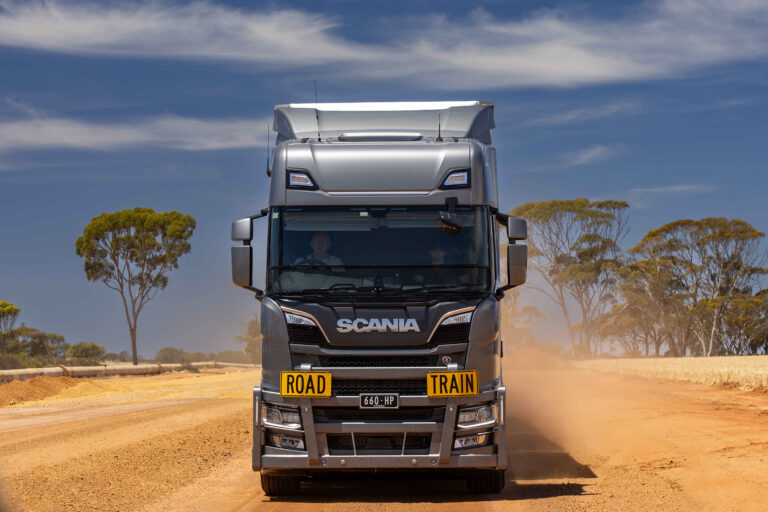Australia has one of the oldest truck fleets in the developed world, with the average age of heavy vehicles sitting at around 15 years. This is significantly higher than in Europe, where fleets are often replaced within six to seven years. While European operators benefit from the latest in fuel-efficient Euro 6 engine technology and aerodynamically optimised truck designs, many Australian fleets continue to run older, less efficient vehicles. This delay in fleet renewal is limiting Australia’s ability to reduce transport emissions and take full advantage of modern, cleaner technology.
Why is Australia’s Truck Fleet So Old?
There are several factors contributing to the high average age of Australian trucks. Unlike Europe, where a well-developed second-hand market makes it easier for fleets to cycle out older trucks, Australia lacks the same scale of resale demand. As a result, many operators choose to hold onto trucks for much longer, often running them well past a decade before considering a replacement.
Additionally, government policies and incentives in Europe encourage faster fleet turnover. In countries like Germany, France, and the Netherlands, tax benefits, road toll discounts, and low-emission zones push operators to invest in newer, cleaner trucks. Australia, on the other hand, has minimal incentives for upgrading, meaning fleet owners are left to justify new purchases purely on financial and operational grounds.
“In Europe, you couldn’t drive a Euro 3 or older truck in major cities—it was just banned,” explained Manfred Streit, Managing Director of Scania Australia in an exclusive interview with Fleet News Group. “Over time, road taxes were structured so that Euro 6 trucks had the lowest costs, Euro 5 a little more, and Euro 4 even higher. This meant that if you were still operating a Euro 3 truck, it just wasn’t viable—you had to upgrade.”
The Impact of an Older Fleet on Emissions
New trucks are significantly more fuel-efficient than those built a decade ago. A modern Euro 6 engine can reduce CO₂ emissions by up to 10% compared to an older Euro 5 model, simply through improved combustion efficiency and exhaust after-treatment systems. Furthermore, aerodynamic enhancements in modern truck designs reduce drag, improving fuel economy and lowering emissions even further.
Operators that hold onto their vehicles for longer miss out on these incremental improvements. While each new generation of trucks offers better efficiency and lower emissions, fleets running 10- to 15-year-old vehicles are locked into outdated technology, consuming more fuel and producing higher emissions per kilometre.
“Even if it’s only an 8 to 10% improvement per truck, multiply that by thousands of vehicles, and the impact is significant,” said Streit. “We introduced our Super engine with a focus on improving efficiency, because lower fuel consumption means lower emissions. But if operators hold onto older trucks, they are missing these benefits.”
Fleets That Replace Trucks Regularly See the Benefits
Fleet operators that cycle their trucks every five to seven years are in a much stronger position to reduce their environmental footprint. By continuously upgrading to the latest technology, they benefit from improvements in engine efficiency, vehicle aerodynamics, and advanced safety features.
These fleets also enjoy lower total cost of ownership. Newer trucks typically have lower maintenance costs, better fuel efficiency, and enhanced reliability, reducing the risk of costly downtime. With a younger fleet, operators can also leverage higher resale values, ensuring they get a better return when trading in their vehicles.
“We see this mindset in some fleets here in Australia, but not enough,” said Streit. “If a company runs a truck for 10 or 11 years, maintenance costs go up, efficiency drops, and the technology becomes outdated. In Europe, we encourage fleets to trade in after five years—it’s better for the operator and the environment.”
Encouraging Faster Fleet Turnover
For Australia to achieve meaningful emissions reductions in the transport sector, there needs to be a stronger push toward fleet renewal. Government incentives, such as tax benefits for new Euro 6 trucks, reduced registration fees for lower-emission vehicles, or scrappage schemes for older trucks, could encourage operators to upgrade more frequently.
“The government is not really looking at this,” said Streit. “There are no real incentives to move to Euro 6, no support for reducing the age of the truck fleet. In Europe, these policies worked—they forced operators to modernise. Here, fleets are still running trucks from the 1980s and 1990s. That needs to change.”
The longer Australia delays these changes, the more the country risks falling behind in transport efficiency and sustainability. Modern truck technology is available today—operators just need the right environment to make fleet renewal a viable, cost-effective decision.






